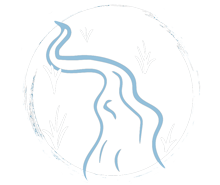Water
The Water Theme encompasses Tasmania’s key water assets, which include rivers and estuaries, wetlands and waterbodies, and coastal and marine systems. Tasmania’s water assets support multiple primary industries including agriculture, fishing, and aquaculture. They also support community-dependent infrastructure systems for hydro-electric power generation, drinking water supply and wastewater treatment, ports, and marine traffic. The built environment is concentrated near the state’s water assets. The combined influence of climate change, development and land use change, human movement and population change, and ageing infrastructure, is increasing pressure on water assets. Further, emerging priorities may be associated with threats to Assets that are due to climate-driven events such as drought, bushfire and flood, and these are likely to be ongoing issues in managing water resources.
Protection and management of water resources is closely linked with land management, including some actions listed in the Land Theme (e.g. soil and erosion management and resilient landscapes) and Biodiversity Theme (e.g. aquatic threatened species and important vegetation communities, including riparian vegetation). The delivery of actions across all Themes will contribute to the health of Tasmania’s water resources.
RIVERS, FLOODPLAINS AND ESTUARIES

The movement of fresh surface and groundwaters through the landscape supports ecological, economic, and social values. Ecological values of catchments and estuaries, and current and emerging threats in receiving waters are used to identify Priorities and Actions for rivers, floodplains, and estuaries.
WETLANDS AND OTHER WATERBODIES
Wetlands and other waterbodies include internationally recognised wetlands of significance under the Ramsar Convention, which support high-value ecological communities. Nationally and regionally important wetlands and other water bodies are recognised for their conservation value.
COASTAL AND MARINE AREAS
Coastal and marine areas encompass a wide variety of landscapes and habitat types. Important coastal and marine areas can be identified by high value habitats or species. To enhance ecological, social, and economic values, identified Actions will build resilience to pressures and emerging threats across regional Priorities.
WATER CATCHMENTS
Approximately 150,000 km of river systems
Longest rivers:
- South Esk – 252 km (North)
- Derwent – 239 km (South)
- Arthur –172 km (Cradle Coast)
RAMSAR WETLANDS
Internationally significant wetlands covering 26,000 ha
- 10 Ramsar wetlands ranging in size from 7 ha to 4,517 ha
- 89 nationally important wetland
ESTUARIES
Moderate to large in size
- 68 critical/high conservation value estuary systems
KM OF COASTLINE
2,237 km of mainland coastline
- 900 beaches
- 9 Interim Marine and Coastal Regionalisation of Australia bioregions
- Over 300 islands with 10 over 5,000 ha in size
MARINE CONSERVATION AREAS
Covering 135,000 ha
- 7 Marine Nature Reserves
- 3 Australian Marine Parks
